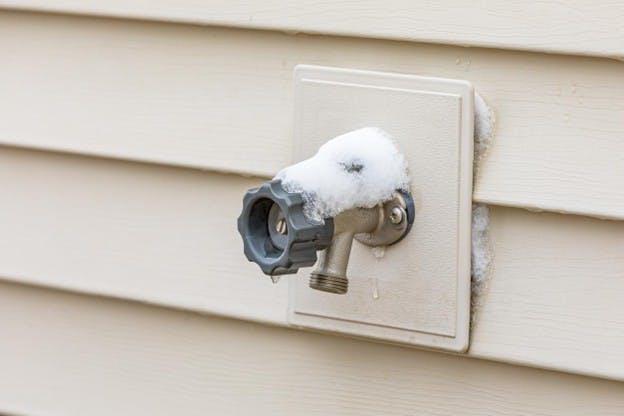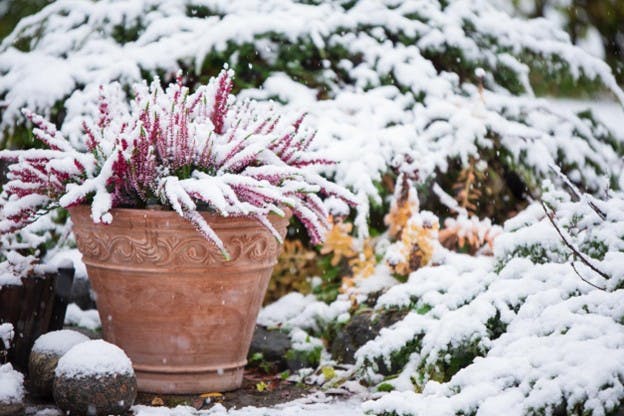Tips for Preparing Your Home for Winter
Find your Smart Storage™ unit.
We have locations across the United States providing onsite StoreEase Virtual Customer Service™ and 2 Minute Move In® contactless rental.
We have locations across the United States providing onsite StoreEase Virtual Customer Service™ and 2 Minute Move In® contactless rental.



As winter approaches, it is essential to ensure that your home is well-prepared to withstand the colder temperatures and potential challenges that come with the season. From energy efficiency to safety considerations, being proactive with the steps you take to winterize your home can make a significant difference in your comfort and well-being. In this post, we will provide you with a guide on how to winterize your home, covering everything from insulation and heating to emergency preparedness.
● Draft-Proof Your Home: Seal Gaps and Cracks
Drafts and air leaks can significantly impact your home’s energy efficiency during the winter. Check for large gaps and cracks around doors, windows, and any other large openings in your home. Then seal these areas with weatherstripping or caulk to prevent cold air from entering and warm air from escaping. This will also help you save money on your utilities bill.
● Properly Insulate Your Home
Proper insulation is critical in maintaining a comfortable indoor temperature during winter. Inspect your attic, walls, and ceilings for adequate insulation levels where you can, and consider adding more if needed. The insulation should be above or level with the joists of the walls or attic floor. If they are below, it is probably time to add more. This investment will lead to significant long-term energy savings.
Frozen pipes can lead to serious issues in your home, such as bursts and water damage. The best tip for ensuring your pipes do not freeze over in the winter is to keep your home at temperatures of at least 55° F during the winter, even if you are traveling on vacation, so the indoor pipes cannot dip below 32° F. You’ll want to insulate exposed pipes, especially in unheated areas like basements and attics. In frigid climates, consider using heat tape or cables to prevent freezing. You should also know the location of your main water shutoff so you can access it quickly in an emergency.
Winterizing the outside of your home is just as important as tending to the interior. Inspect your roof for any missing or damaged shingles and signs of leaks. You should also check your gutters, as there is a good chance you will have dead leaves and foliage from the fall season. You’ll want to clear out your gutters, as they direct rainwater and snow away from your roof to prevent water from seeping in and causing damage.
If you have patio furniture, umbrellas, canvas overhangs, grills, or any other outdoor fixtures that are susceptible to damage from harsh winter climates, you should disassemble, cover, or store them for the season.
You spend months working hard to ensure your garden looks its best. Protect it in the offseason so it’s good to go in the spring! Before the cold weather begins, ensure the soil around your plants has plenty of residual moisture. You should also avoid applying new fertilizers and pruning trees or evergreen shrubs in the fall, as this encourages new growth that might get damaged by the cold weather. When the cold front finally rolls through, it is good practice to disconnect garden hoses and shut off the water supply to outdoor faucets if possible to avoid bursting outdoor plumbing fixtures.
Ensuring your furnace is ready to handle the cold season is vital to winterizing your home. Replace the furnace filter before using it for the first time this year, and it is always a good idea to schedule a preventive servicing appointment with a professional who can help you avoid any issues you may run into during the winter.
You never want to be caught off guard during winter storms. Stock up on essential supplies like rock salt or ice melt for walkways, batteries, flashlights, non-perishable food items, water, and blankets to ensure you are prepared if you get snowed in and lose electricity. It is also good to have a snow shovel in an easily accessible place so you can clear your driveway and walkways when needed.
Preparing your home can make a substantial difference to your comfort, energy efficiency, and overall well-being as winter settles in. By following these steps, you will not only create a warm, inviting space, but you will also create long-term energy savings and build up the resilience of your home.
If your home has an abundance of seasonal clutter, whether it's containers of summer clothing, decorations, outdoor furniture, or pool floaties, StoreEase has the perfect solution for you. With flexible storage units and a variety of premium features, self storage can help free up your home and ease your mind this winter season. Find a StoreEase location near you today!